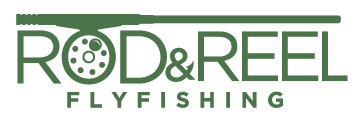Taking up fly fishing? Here are some important items and gear you should have for your first few times on the water. Check out my recommendations for fly fishing essentials as a newbie angler!
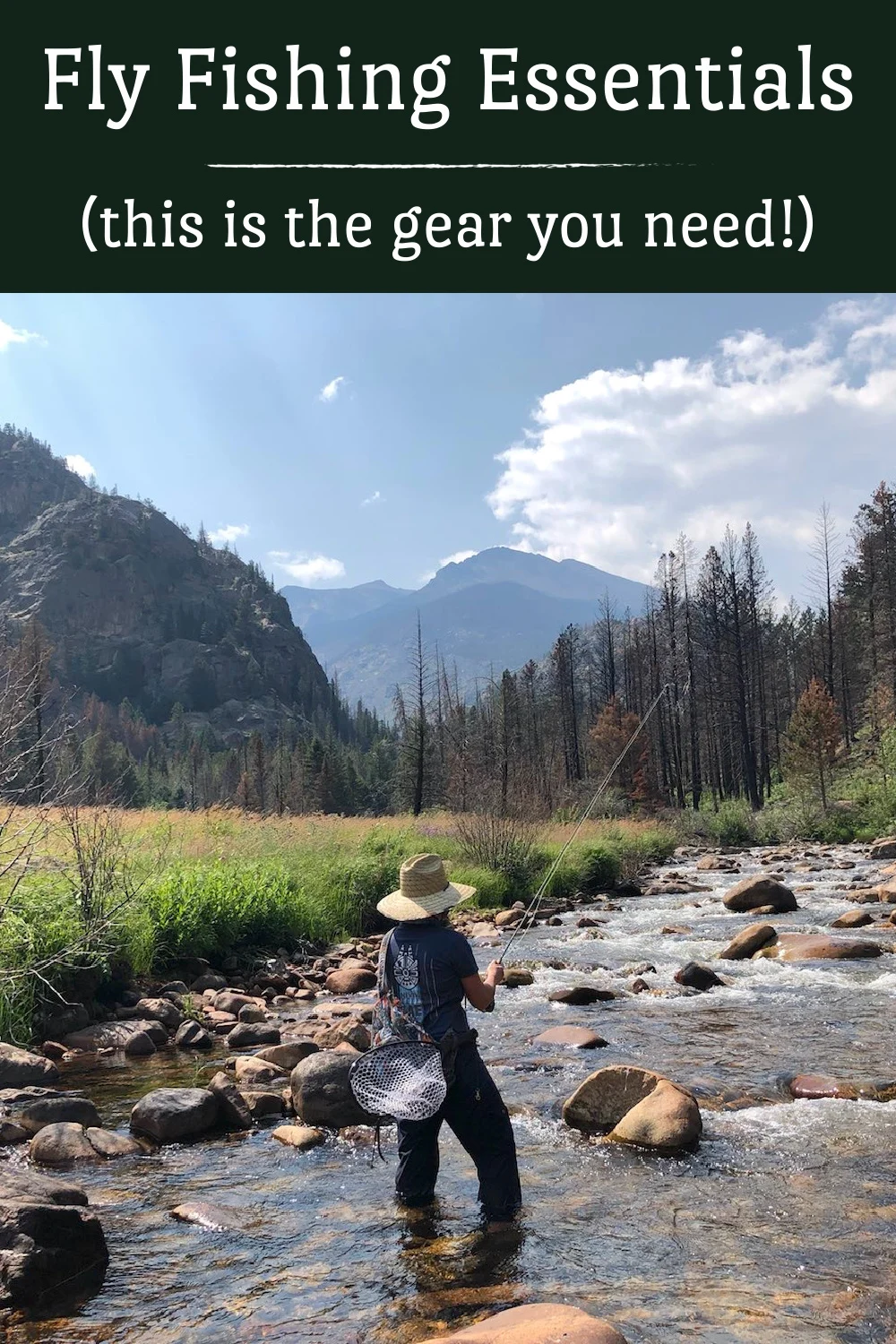
Let’s have a moment of honesty with each other, shall we? One of the best parts of trying a new sport or hobby is the gear. There’s a level of excitement around figuring out what you’re going to need, what brands you’re going to buy, what your friends have . . . . it’s a thing.
And the same is true of fly fishing.
BUT there can also be a little bit of stress or uncertainty about what to get as well. I’ve experienced the feeling of buying “the wrong thing” because I wasn’t yet experienced enough to know exactly what I need; and in most instances, what specifically would work for me.
There’s obviously a money aspect to it as well. Sure you can keep receipts, but once you’ve dunked something into the water it might be hard to justify a return. Fly fishing doesn’t have to cost a fortune, but there’s an initial investment to it, like most sports.
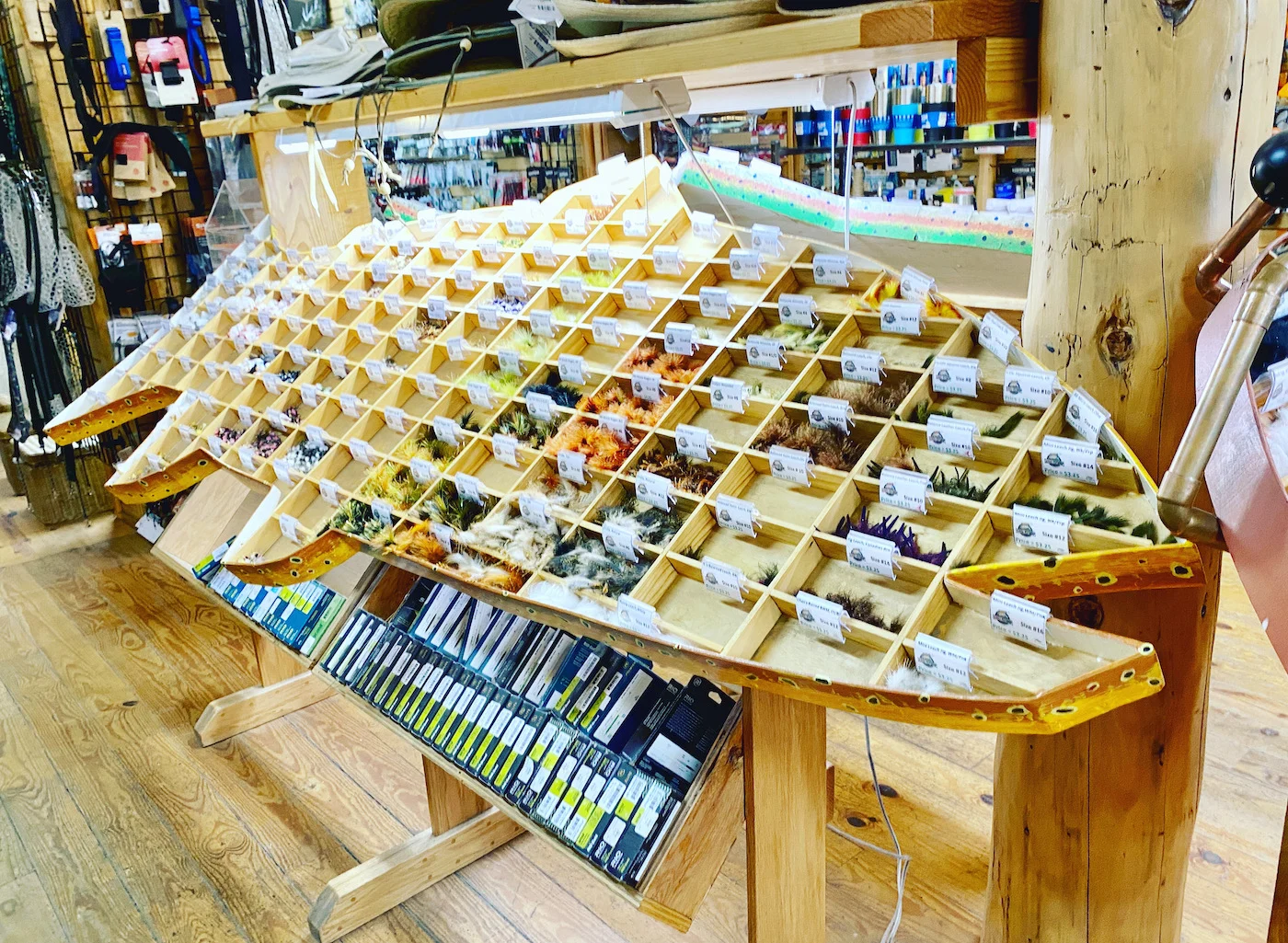
I’m excited to share my list of fly fishing essentials with you, as well as the brands I’ve purchased so far. I didn’t buy it all at once, and I went to Orvis fly fishing school so I could learn about the gear and accessories and try other people’s stuff before I bought anything.
If it’s possible for you to attend a school or go with someone who is nice enough to let you try their gear, I highly recommend it. This will give you time to acquire learn which essentials work best for you so you don’t waste money. I recommend searching “fly fishing groups near me” to hook up with other anglers in your area if you don’t know anyone.
Essential Fly Fishing Gear
There are actually quite a few items you’re going to need before you head out to the water and catch something. I’ll be honest . . . I didn’t catch anything on my first few trips. I wasn’t mentally ready to do so. Which sounds dramatic, but I really wanted to learn how to cast first before I did anything else. And I didn’t want to kill any fish.
Going out to the river several times without a net just to practice worked for me. You will need to figure out what works for you. I recommend just getting started, even if you just go to a body of water and practice casting. The best way to jump into fly fishing is to – jump in! Into the gear I mean. Not the river. Unless you want to (just don’t do it in your waders cause you might sink).
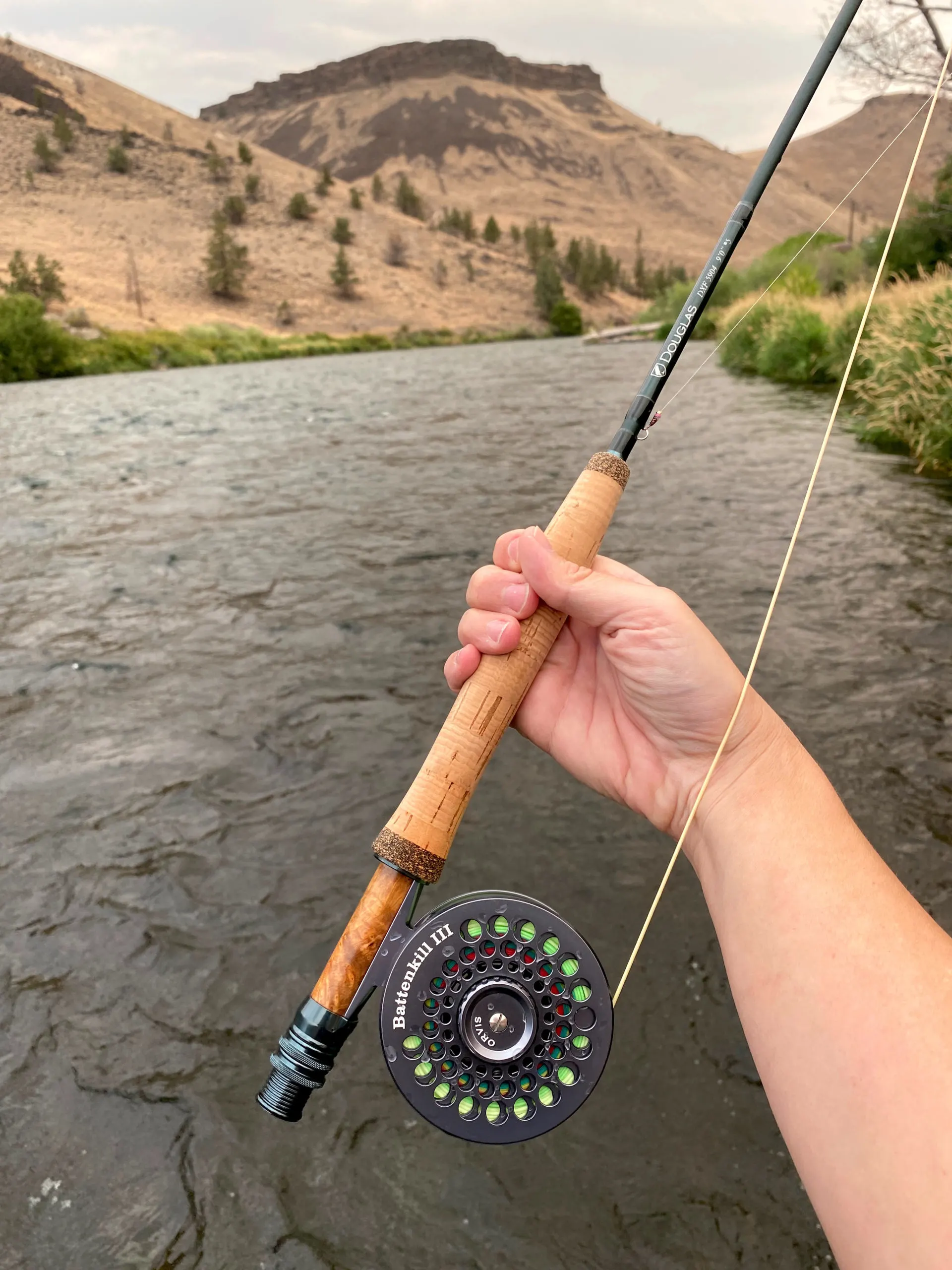
Fly Fishing Rods
If you don’t have a fly rod, you’re going to have a very hard time catching any fish. In terms of fly fishing essentials, this is the essential, along with your reel and line.
There are two numbers associated with fly rods: the length and the weight. The 9-foot length is the classic fly rod length, and it offers a good combination of smooth casting and size – not too short or too long.
There are a ton of fly rod length and weight combinations out there, but the experts tell me that a good beginner rod is the 9′ 5 weight that works in most applications. I have the Douglas DXF and so far I am very happy with it. I have caught fish with “Doug,” so we are quickly becoming close friends. Another great option on a budget is the Orvis Clearwater.
Fly Fishing Reels
The fly reel holds your line and backing, weights the rod and allows you to catch a fish. As the name suggests, you’ll use it to reel in your little river friends. The reel size corresponds with the line weight it’s designed to hold, which goes with the rod.
There’s a lot that goes into reel knowledge, so don’t worry if it’s confusing. Have your fly shop help you until you learn. I will tell you that I’m still learning about reels – I don’t know much. Yet I have still caught fish. This is because I let the fly shop match my rod and reel, and it works! My reel is the Orvis Battenkill III.
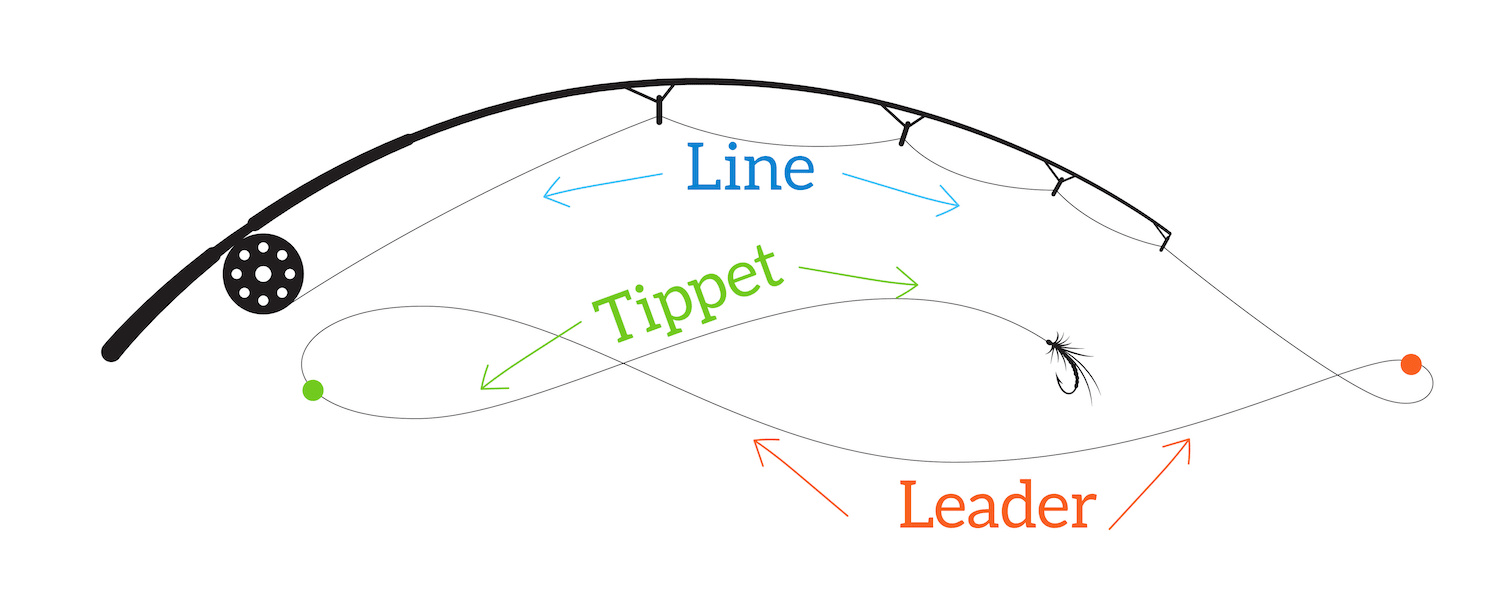
Line, Leader, and Tippet
Understanding why there are three parts to a fly line setup was confusing to me for the longest time. The setup starts with the line that wraps around the reel, and then the next attachment is the leader. Fish can’t see your line’s color – it looks black to them. But the black isn’t exactly appealing.
That’s where the leader comes into play. The leader is the clear connection to the fly that our aquatic buddies can’t see. Because if they see it, they get suspicious. It’s hard to catch a suspicious fish.
Tippet is the smallest gauge line on your rig, and it’s meant to extend the life of your leader. You WILL break your tippet, and then you’ll understand why you have it. While not required, it’s inexpensive compared to leader and line.
Note: everything above attaches with various knots and connections. More on that in an upcoming post!
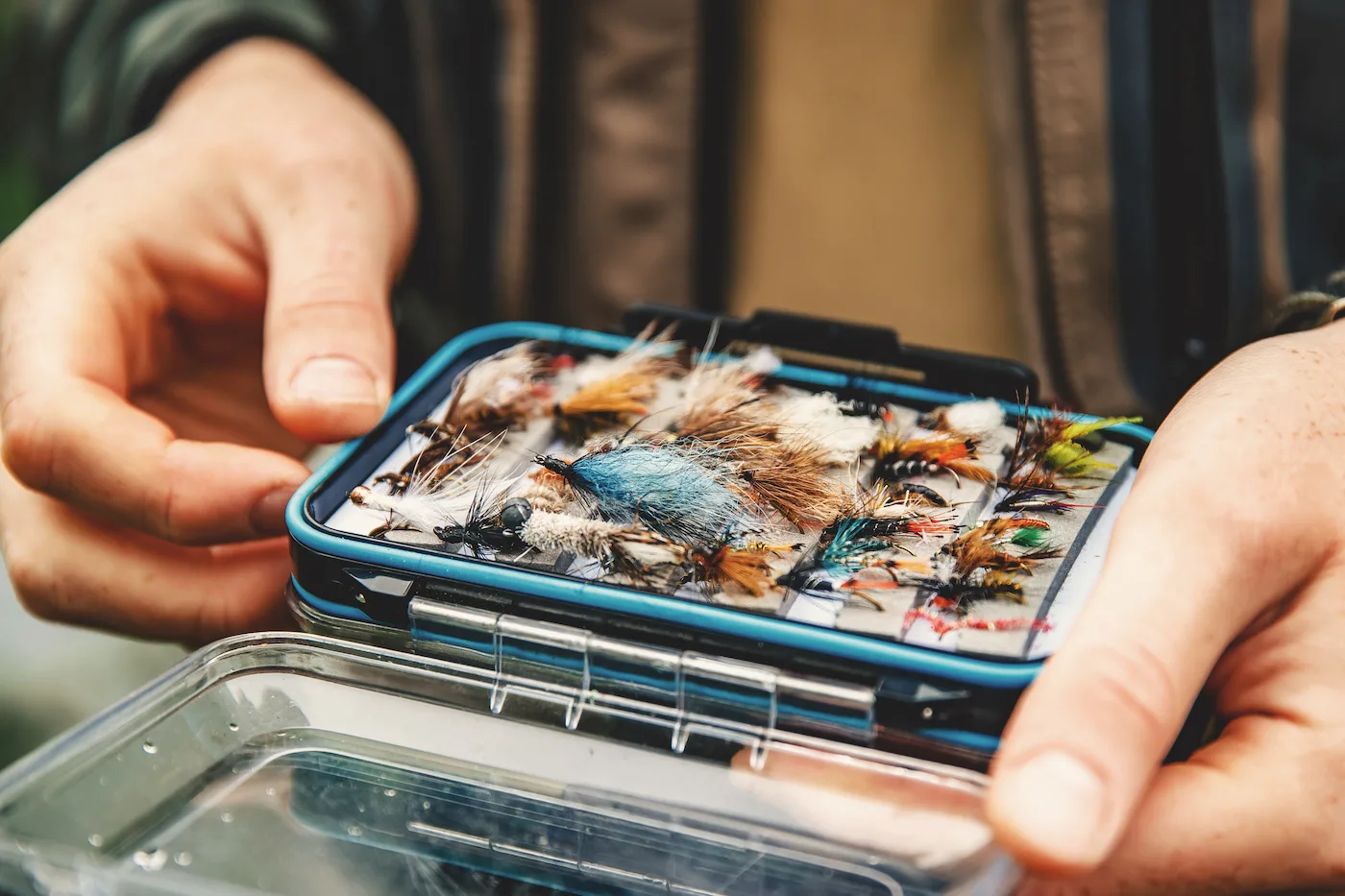
Fly Fishing Flies
Flies are the “fun” part of fly fishing essentials, at least to me. There’s a whole world out there of fly tying (making your own flies) that I’m excited to explore. As a crafter, it’s very appealing. If you like entomology, flies will make you happy.
But before you even get to making your own flies, you’ll be purchasing flies to mimic insects in the river you’ll be fishing. The whole goal here is to get the fish to bite because they think it’s the food they’re used to eating (both above and below the water).
The flies you select are highly dependent on the place you are fishing, so I recommend going to a fly shop for advice on what to get. At this point in my angling journey, I rely on the fly shops to tell me what I need (and I purchase directly from them).
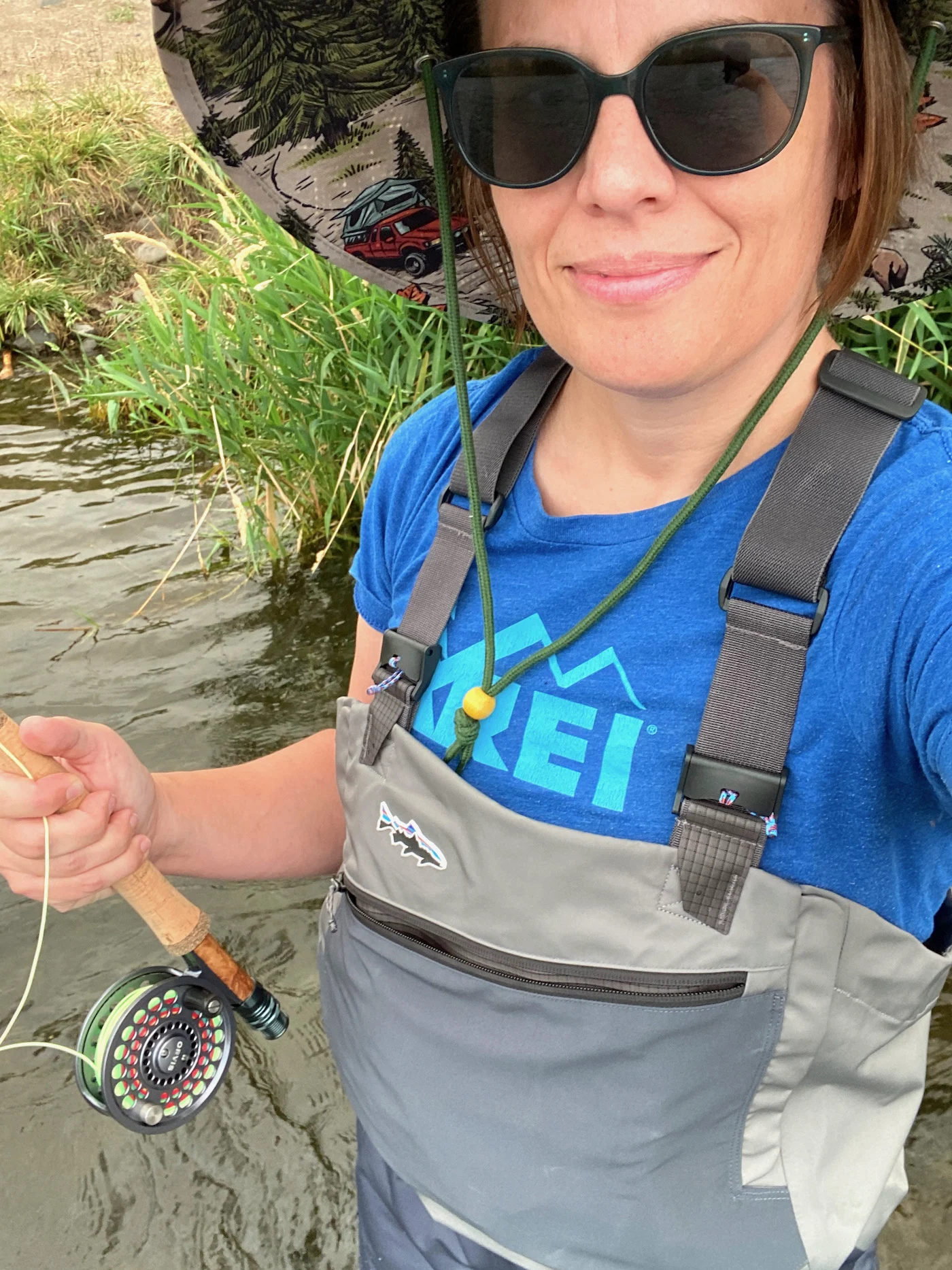
Waders
There is something called “wet wading” where you can just waddle into the river in your technical pants, but most people like having waders. A lot of fish love cold water, and waders not only keep you dry, but they keep you warm.
Waders are basically waterproof overalls with booties at the bottom (that will go right into your wading boots). If you want to give waders a try before purchase, you can hit up your local fly fishing shop to see if they rent them. That’s what I did for my first pair of waders.
For reference, I ended up purchasing Patagonia Swiftcurrent waders for women, and I’m really happy with them. Simms waders also come highly recommended to me by fly fishing shops.
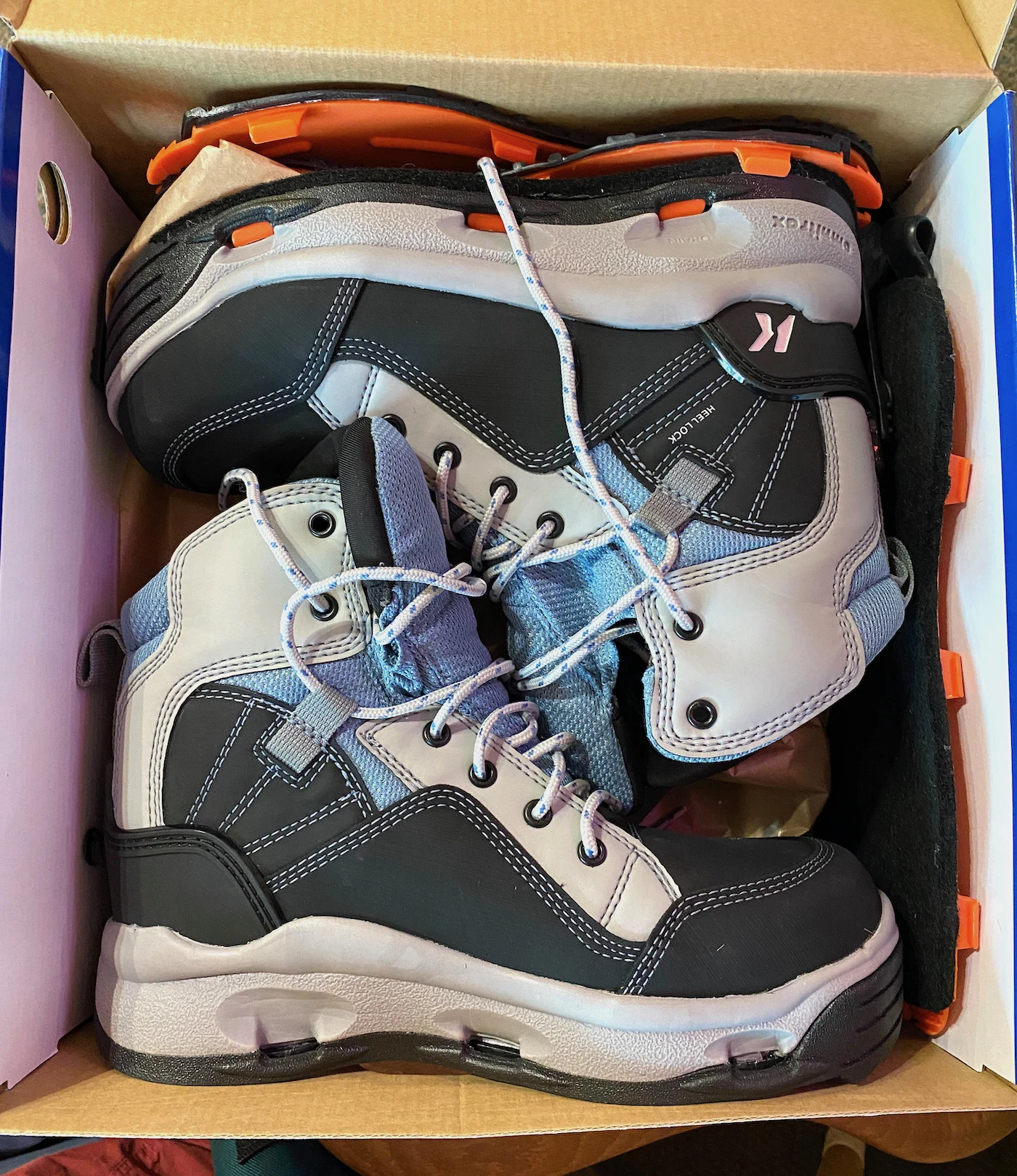
Fly Fishing Boots
As I’ve gotten older, my feet have gotten pickier about what they wear. When I was younger, it didn’t matter – I could break anything in. I love being in my 40s, but my feet aren’t as happy about it. So to me, boots are a big deal.
Good fly fishing boots top the list of my fly fishing essentials. You can wear them alone, but the basic idea is that you will stick your waders into them (the bootie portion), and submerge your entire foot into the water. They are made to get wet.
In addition to the boot itself, you’ll need to consider the soles you get with the boots. You’ll want something non-slip so you don’t bust your buns in the river. There are also limitations to what soles you can use depending on where you’re fishing. Felt soles are popular but they can also transfer small species from one river to another. And that’s bad.
Ask your local fly shop or do research on what soles are allowed. I love Korker boots personally. I have a pair of the Buckskin Mary boots and I’m in love. There was no break in period, and they have interchangeable soles. Simms also makes great fishing boots.
This purchase is worth taking a trip to your local fly shop for purchase. Not only will you support a small business, but you can discuss the merits of different boots depending on the area that you live in, as well as the soles. That is how I purchased my boots and soles, and I’m glad I did.
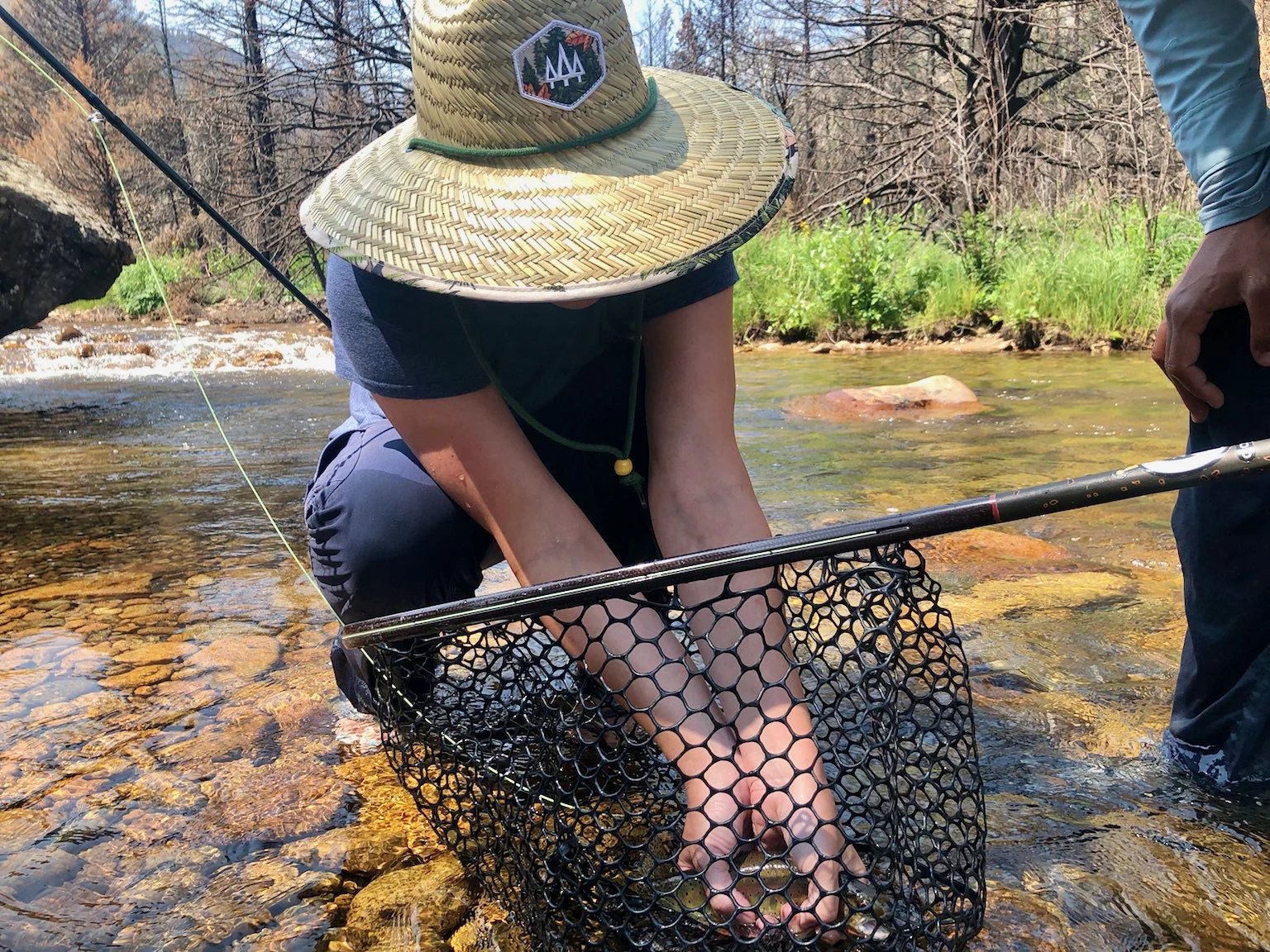
Fly Fishing Net
Only second to rods, reels, and your line is a fishing net. Once you land a fish, you’ll need something to wrangle its floppy self. I do catch and release fishing, so the goal is to get the fish in the net, get the hook out, and let it go.
Nets come in a variety of sizes, and you’re looking for something that is soft on the fish, anti-tangle, and anti-mildew. I just recently bought a Fishpond net and I love it. The nice thing is that it has replacement nets for the frame, so I don’t have to buy a whole new setup if I damage just the net portion alone.
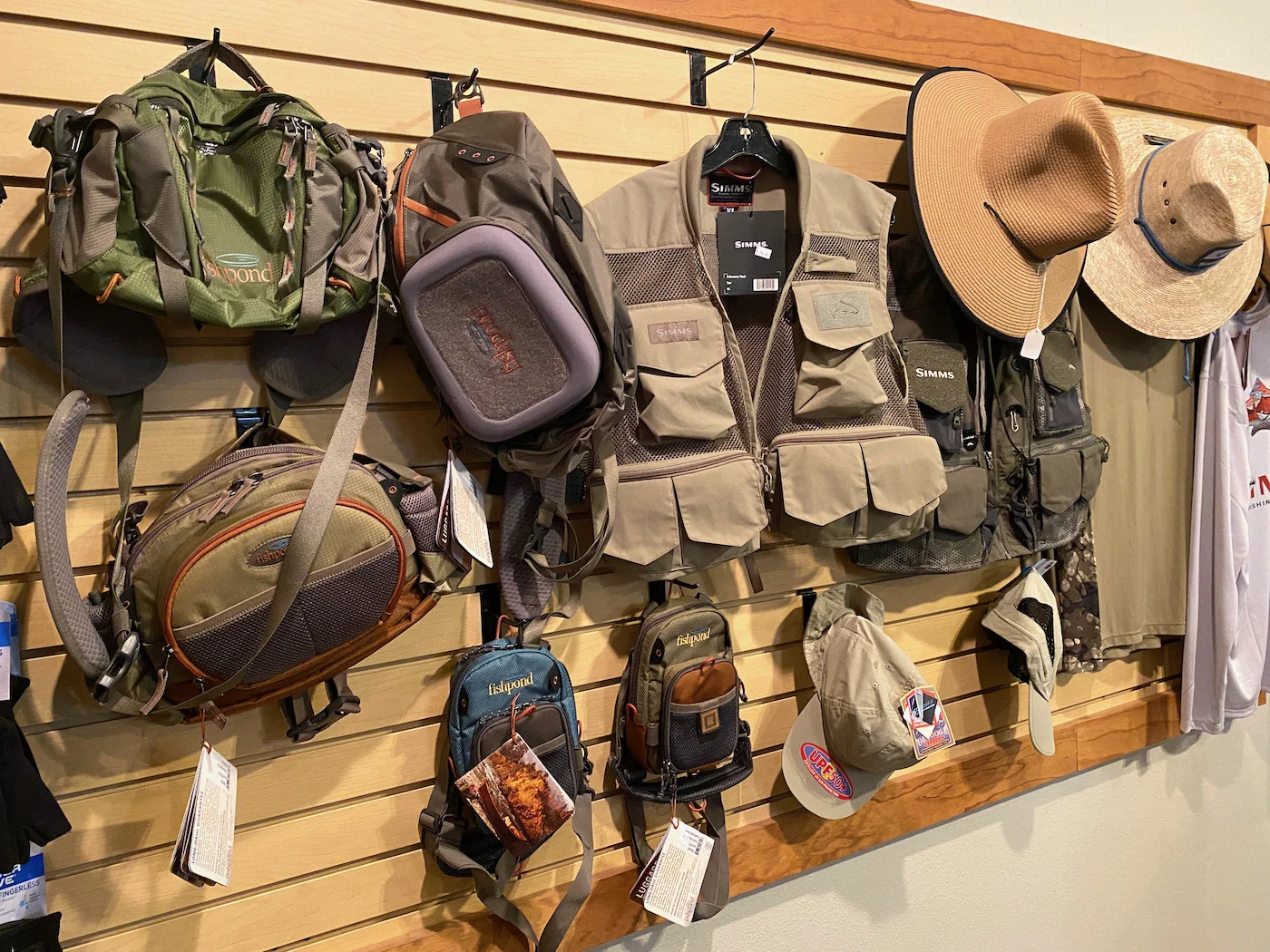
Gear Pack or Vest
This is the most personal of all the fly fishing gear in my opinion, and comes down to an important question – where do you want your gear to sit? There are packs that put your stuff around your waist, slung on your back, or on your front like a Baby Bjorn.
I have a sling pack now, but I’m thinking of getting a waist pack or fly fishing vest because my back can be tenuous at times due to some orthopedic issues I acquired years ago. If you’re an angler I’m sure you know what I’m talking about – we all have them.
Orvis and Fishpond make some great packs, so check out what they have. If your bag isn’t waterproof, you’ll want a waterproof pouch to keep your car keys inside the bag. That way if you dunk yourself, you can still drive home. You’ll be wet, but it’s better than being wet and waiting for a ride too.
Polarized Sunglasses
Polarized lenses reduce glare and reflections off of the water as well as eye strain. These type of sunglasses have a special chemical applied to filter light, kind of like mini blinds hanging in front of your eyes. They will help you see into the river and potentially see fish.
UV blocking and polarized are not the same, so make sure your glasses say both if you want UV protection. You can also get prescription polarized lenses, which is what I do as a glasses wearer. Smith Sunglasses are a popular choice, and Sports RX is great for outdoor prescription lenses.
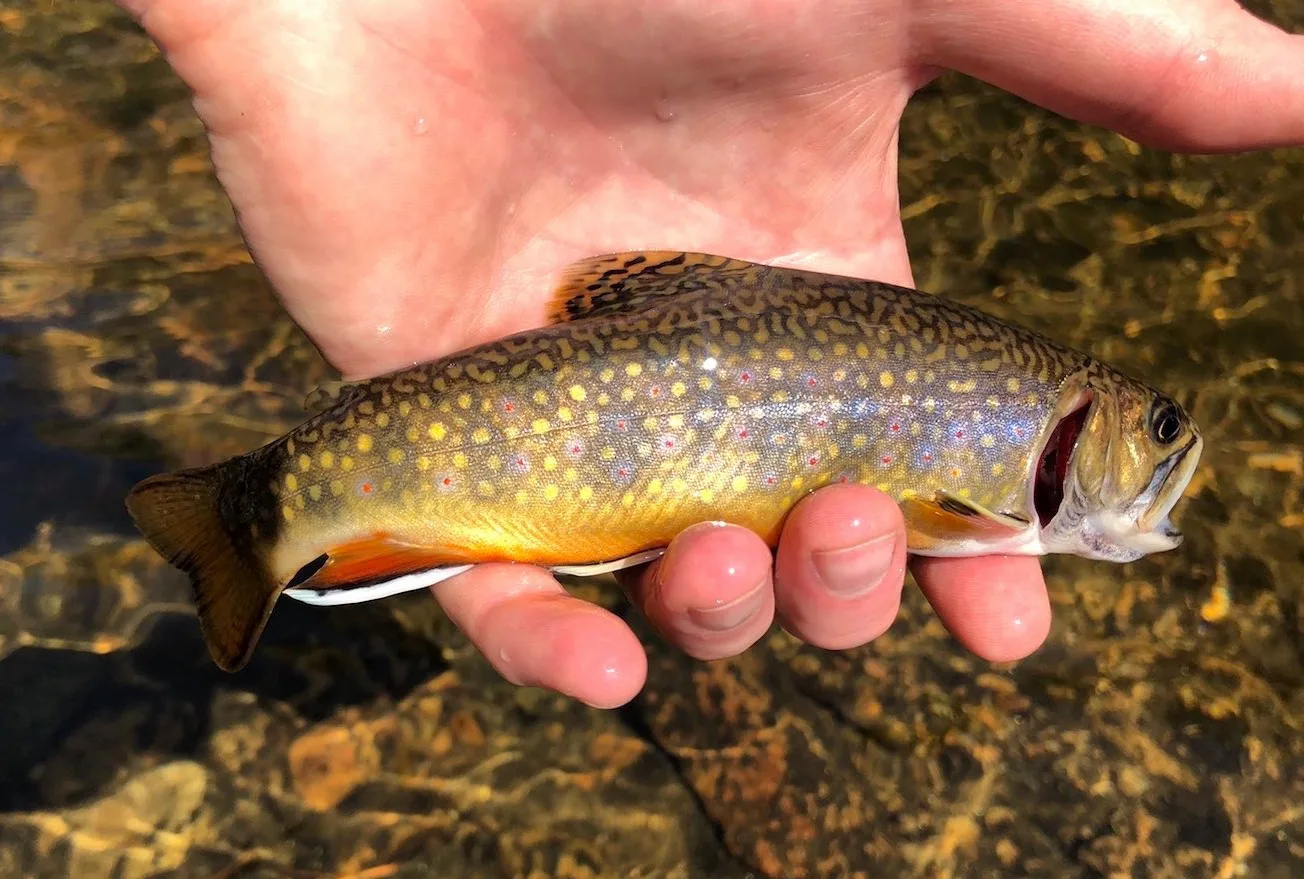
Ball Cap or Hat
A hat offers sun protection as well as keeps the glare out of your face so you can see what you’re doing. You can wear a ball cap or something fancier like a Hemlock hat. If you don’t wear a lid, you’ll notice – trust me.
In addition, consider things like buffs and neck gaiters to protect yourself from the sun.
Sunscreen
Of all the fly fishing essentials, this seems to be the one that I forget the most. I’ve gotten burned practicing casting while not even on a river. The sun is a harsh mistress, my friends. And when you are on the river, there’s a reflection. Do not forget this, or you’re not going to have a great time.
Water & Snacks
I have a bit of a reputation as a snack queen with my friends – don’t be jealous. But seriously, have enough water to keep yourself hydrated while on your journey, and maybe a granola bar or two. No one likes a “hangry” fisherman or woman.
Now that I’ve shared my fly fishing essentials with you, I’d love to hear yours in the comments! I don’t care if you’re new or experienced – I’d love to hear what gear you can’t live without.
